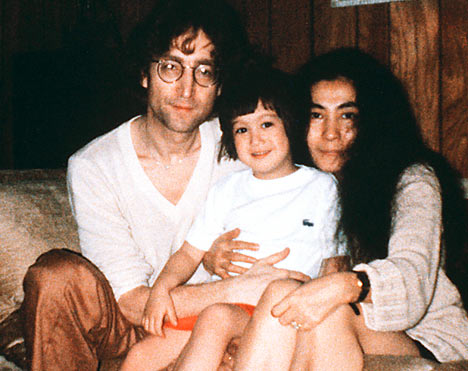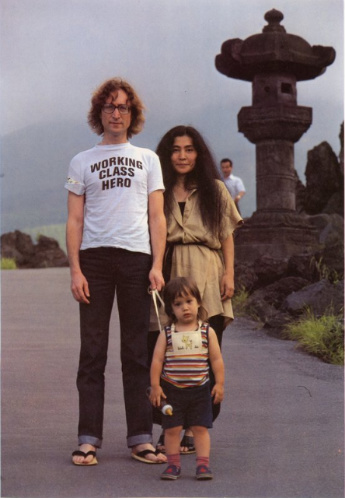JOHN LENNON ESSENCE AND REALITY PART FOUR: GROW OLD WITH ME
PART FOUR: GROW OLD WITH ME

John Lennon: Essence and Reality
Part 4: Grow Old With Me
I bought the album Milk and Honey on the day it was released in 1984, having been convinced from Double Fantasy that Lennon had entered the period of his deepest work, and I was not disappointed. Two of the six Lennon songs, “Living on Borrowed Time” and “Grow Old With Me” demonstrated what the title alone had suggested, that Lennon was exploring uncharted horizons: the joys of maturing and finding stability as one grew older. I almost wrote “exploring forbidden territory”, because the rock’n’roll mentality was famously expressed in lines like “hope I die before I get old.” It had always been “sex and drugs and rock and roll”, yet here was Lennon turning his back on that, saying that there were better things in life. I recall that in perhaps his final set of interviews, he said of Neil Young, who had a stated admiration for Sid Vicious, something like: “if he admires him so much, why doesn’t he follow his example?.
Lennon realized that one needs a solid foundation to build high. One gets a tremendous thrill from the pleasures of the fast life, but there is no future in that thrill, and one soon gets sated, always seeking novelty and needing larger doses (Al Stewart addresses some of this very nicely in “Gina in the Kings Road”). But more fundamentally even than that, fast pleasures are actually less satisfying than the joys of maturity. It is something like how one can set up a pavilion on the grass, and start partying at once, or one can invest the time and effort and build a house. Not only will the house outlast the tent, but one can do far more with it, one can divide rooms, shut out noise, keep in heat, add a second floor or excavate a cellar, it possesses greater possibilities. With due allowance for the Bedouin, one could say: “houses for families, tents for transients”.
Of all the rock and rollers, Lennon was the first, so far as I am aware, to positively, directly and consistently address not just growing older, but maturing, establishing a family, learning from one’s mistakes, and acquiring a new attitude to life. He had done the unthinkable in withdrawing from the limelight and from recording in order to focus on his family, and now he had returned, a deeper person, to speak to his own people as no one ever had before. Indeed, he was attempting to do it over his two projected albums. It seems to me that next to this Dylan’s introducing political folk music to a wider arena was not an innovation but an act of trade: repackaging a product so as to sell it in a new market. This honest, candid approach to maturing, expressed in his unmatched songs, is why, to my mind, Lennon was the greatest and most significant rock and roller of all, and no one else even comes close.
Central to this process was Yoko Ono. I do not pretend to understand her, but it was not by intention that the very first Lennon songs I have studied in these blogs are all “Yoko Ono” songs: “Oh, My Love”, “Because”, “Julia” and “Beautiful Boy (Darling Boy)”, songs about her or with her special contribution. No, I started there because I think they are the very most significant of his songs. Yet, as we shall see in future blogs, he wrote many songs in his solo career which I would not call “Yoko Ono” songs, and some of these are among his greatest: “Instant Karma”, “Working Class Hero”, “How?”, “Mind Games”, “# 9 Dream”, “Watching the Wheels”, “Living on Borrowed Time”, “Tennessee”, “Gone From This Place”, “Free As A Bird”, and “Real Love”. Yoko’s influence is also shown in the way “Double Fantasy” were recorded, packaged ad titled. Double Fantasy is the name of a flower which impressed Lennon (certainly the name if not the flower), and “Milk and Honey” is said to be a reference to a mixed Asian and Anglo-Celtic couple. Both albums were conceived as Lennon and Ono singing to each other, hence the tracks are alternately written and sung by one and then the other.
As stated before, to one of my taste, his single supreme achievement was “Grow Old With Me””.
Grow old along with me, the best is yet to be
When our time has come, we will be as one.
God bless our love, God bless our love.
Grow old along with me, two branches of one tree.
Face the setting sun when the day is done.
God bless our love, God bless our love.
Spending our lives together, Man and wife together,
World without end, world without end.
Grow old along with me, whatever fate decrees,
We will see it through, for our love is true.
God bless our love, God bless our love.
Clearly, it is a song of love producing unity: note that he does not sentimentally say that “we are one”, but that “when our time has come, we will be as one”. An altogether more realistic thought which does not deny the reality and depth of what they have; rather it is hopeful. Its realism comes from the insight that the goal, oneness, is far higher than easy romanticism would have it. It is, Lennon sings, the given consummation of a process.
As my reference to “giving” might suggest, I see this as also a song of God, a hymn. Not only is God referred to in the refrain, but the variation echoes the marriage ceremony “I now pronounce thee man and wife”. Little wonder that this song is becoming something of a favourite at weddings, a “standard”, so to speak.
More than this, it directly quotes the Catholic prayer, the “Glory Be”: “Glory be to the Father and to the Son and to the Holy Ghost: As it was in the beginning is now and ever shall be, world without end.” If this reference to the Glory Be is not intended, then what is the purpose of singing “world without end”? The melody, as others have remarked, has a hymnic quality. It is not just a good song for weddings, it is in fact, whether Lennon realized this or not, an anthem for the sacrament of marriage: it stands that highly.
Lennon is not just saying that he hopes that he and Yoko will be together forever, although he is indeed saying that. He is also saying that he knows they can only be together for so long, but that there is something timeless in their relationship. That is why he sings “When our time has come, we will be as one.” Once more, as in “Beautiful Boy”, he is realistic. He knows that they must die.
This is John Lennon, the mystic. He knows that they must die, but he does not know that they must be separated. Rather, he has a strong feeling, one could almost say a ‘faith’ that they are so close as to be a unity, and that they will remain so eternally. Then, to sing about spending their lives together, and then immediately to add “world without end”, is to imply that their love is as it was and as it always shall be, and what is more, it invokes not only God’s blessing as he has earlier done, but what one could call God’s world-view. This is both a love song and a prayer, or, one could say, it is a love song of so extraordinary a quality that it transcends the genre. In the next Lennon blog, I shall consider “God” from the John Lennon / Plastic Ono Band album, and we shall see how far he has come.
Returning to “Grow Old With Me”, the rhythm is steady (there are only a narrow range of rhythms which make for great hymns) and the melody is simple, but uplifting. Unfortunately, the orchestrated version Lennon was planning to release disappeared after his death. But although Yoko had George Martin score another such version for the John Lennon Anthology, I actually prefer the rough home demo which is on Milk and Honey.
As I mentioned in the last blog, Yoko is not mentioned in “Beautiful Boy (Darling Boy)”, and neither, conversely, is Sean mentioned in “Grow Old With Me”. But listen to them: do you think that either of them is excluded?
A final word for the Gurdjieff-inclined, in respect of what I wrote earlier about thrills, pleasures and joy, because I can express the concept very much more precisely and more meaningfully in terms of Gurdjieff’s psychology. Maurice Nicoll has preserved for us something of Gurdjieff’s full teaching of the parts of the centres. Each of the three main centres (intellectual, emotional and moving) does work of two kinds: positive and negative. One can, then, speak of each centre having two parts (even the emotional centre has a negative part for legitimate emotions of sadness, e.g. bereavement, although not much is said of it). I do not think that this means that each centre has two lobes: after all, each centre is spread through the entire body and atmosphere, while having a discrete centre of gravity. Across that operational division cuts a subdivision into three parts: each centre can be considered as having an intellectual, emotional and moving part. For example, one can say that the positive part of the intellectual centre has three sub-parts, and that also the negative part of that centre has three sub-parts. Each sub-part is, I suspect, in reality, a specialized function.
Now, happiness, the glad state we know best, is in the moving part of each centre. That is, when we feel happy, the moving part of the given centre is active. There is a happiness of each of the three moving sub-parts of the centres, intellectual, emotional and moving. Each has a different taste.
Joy, something different from happiness, a positive emotion related not to moving functions, but to feeling, takes place in one or more of the emotional parts of the centres.
Then, bliss, which is something higher yet again, is in the intellectual sub-part of the centres. These deeper parts of centres, and thus the feelings of joy and bliss, are close to each other, and to the higher centres. They are, in fact, portals to another state, the third state of self-consciousness. Who knows, perhaps they may even open a window onto the fourth state, objective consciousness? One thing I am sure of is that the more one feels joy and moves towards bliss, the more all-embracing, the more religious, one’s feelings become.
John Lennon, to put it in Gurdjieff terms, advanced from happiness to joy. And in “Grow Old With Me”, I hear something which, I at last, would say is more even than joy.

————————————————————————————————–
Joseph Azize has published in ancient history, law and Gurdjieff studies. His first book “The Phoenician Solar Theology” treated ancient Phoenician religion as possessing a spiritual depth comparative with Neoplatonism, to which it contributed through Iamblichos. The third book, “George Mountford Adie” represents his attempt to present his teacher (a direct pupil of Gurdjieff and Ouspensky) to an international audience.


Comments
Post a Comment